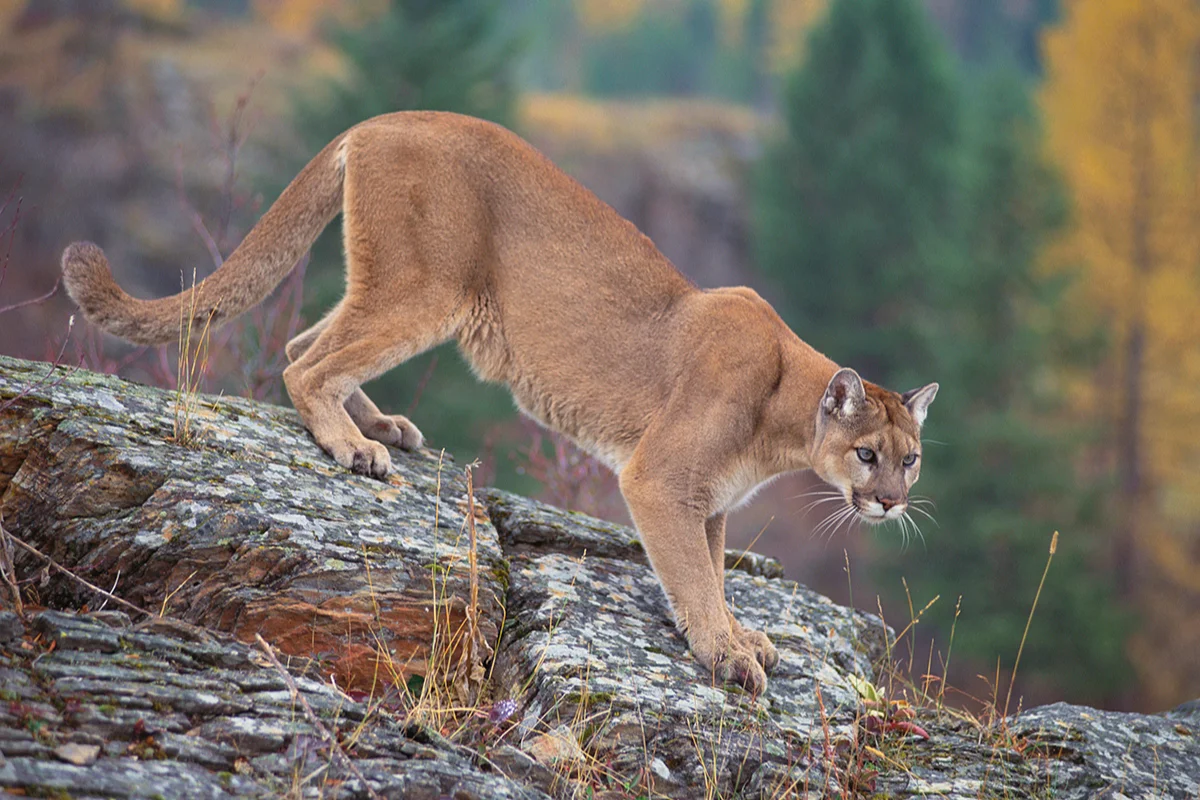

Whenever there are claims of a large cat in a surprising place, the online comments pour in. We’ve seen this recently with claims of a black panther in east Texas and a mountain lion in New Jersey. Identifying wild cats from a photo or video certainly isn’t always easy.
Mountain lions (also called cougars, pumas, and panthers) generally live alone and have massive territories. Historically, mountain lions lived on the East Coast of the U.S. Today, with the exception of Florida, they typically only live in the western states. Thanks to mountain lions’ decline in territory, the animal is considered “threatened.”
Organizations like Panthera focus on educating the public and protecting wild cat species like mountain lions all over the world. The organization works with 40 different species of wild cats, from bobcats to tigers. Their team consists of biologists and other wildlife experts.
Dr. Mark Elbroch leads the organization’s puma program. He’s seen more than his fair share of videos and photos of people claiming to have seen a cougar.
“It’s usually house cats and sometimes bobcats. Those are the common ones,” says Elbroch, when asked what people commonly mistake for mountain lions. “I’ve seen a number of fisher [a weasel-like mammal] shots as well, which is odd because they’re very chocolate brown, but the most common would be house cats.”
A Black Panther in Texas?
Elbroch is one of the best people to ask when identifying a wild animal. So, when a photo out of Huntsville, Texas showed what one person claimed to be a black panther, Outdoors.com shared the image with Elbroch.
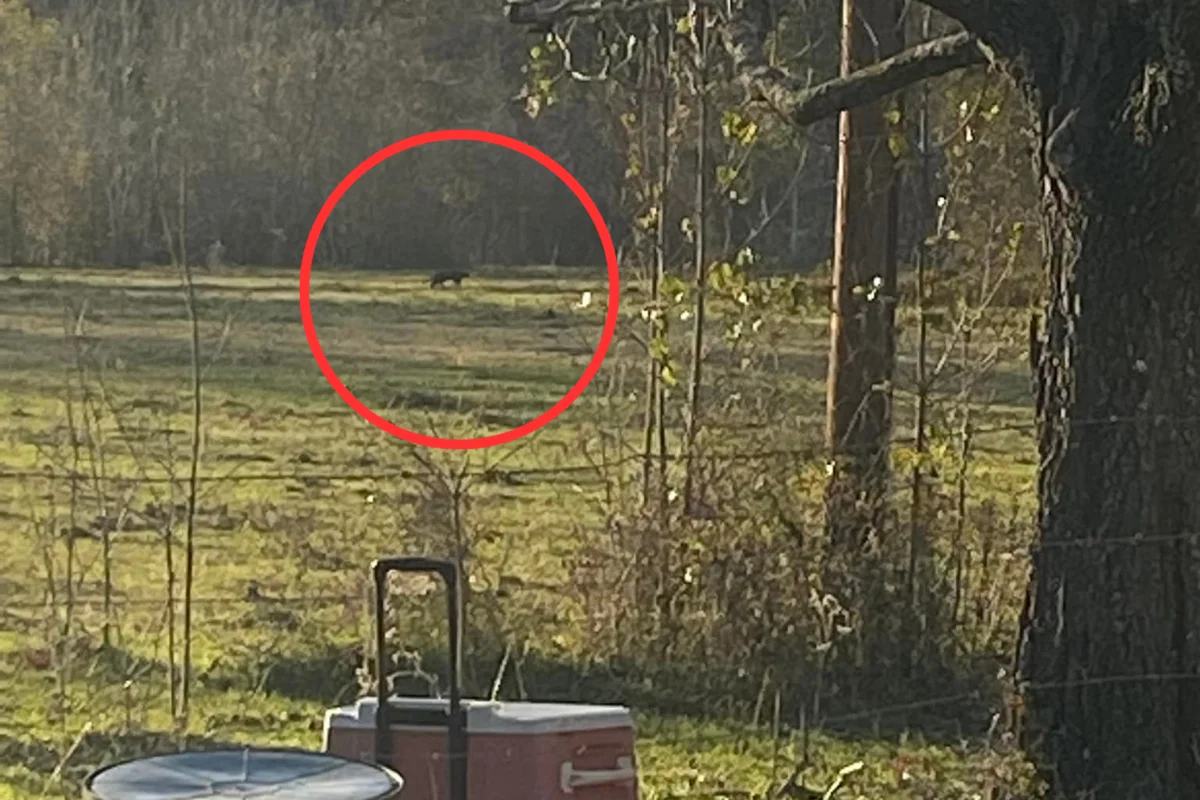
For some background, “black panthers” are not an animal species but rather a melanistic version of a leopard or jaguar. Melanism is a trait that causes animals to have uncharacteristically black or dark fur. Neither leopards nor jaguars live in Texas, so could it be a mountain lion with black fur? Elbroch says that’s not likely.
“There’s never been a documented melanistic (cougar),” says Elbroch. “Not that it couldn’t happen one day, but I would emphasize that as a species that’s legally hunted in the U.S. and Canada, we’re killing . . . 4,000 a year across their range. We’ve been doing this for 150 years or longer. With thousands and thousands of animals caught, captured, handled, some released, shot, brought home, taxidermied, and brought to museums, there has never once been a black puma.”
So, could it be a melanistic jaguar?
Elbroch thinks that is unlikely. While some jaguars occasionally pop up in Arizona, they are far more common in South America.
A Mountain Lion in Connecticut?
Could the image out of Texas simply be a mountain lion in weird lighting? The state does have cougars, especially in the Big Bend region.
“I think that the Texas Parks and Wildlife would support both assertions that one, there are no breeding mountain lions in that part of Texas, and, two, that absolutely some of the sightings in that area are real mountain lions that are dispersing from where they were born in the west,” says Elbroch.
In other words, it’s possible a mountain lion could be in east Texas. In fact, there are documented cases of the animal all over the country. However, in these rare cases, one cougar usually travels for miles to get there. There is not a sustained population in the area.
Elbroch mentioned a case where it’s believed a mountain lion from the Black Hills of South Dakota made it all the way to Connecticut before it was hit and killed by a car. The journey took around 2,000 miles.
While the animals live with their mothers after birth, after that, they’re on their own and will travel many miles to find a mate and their own territory. This sometimes pushes the animal into regions where it rarely lives.
Could Cougars Return to the East Coast?
When a cougar is found out east, it’s almost always a male. The animal goes in search of a mate, and when it doesn’t find one, it continues its search in the wrong direction. Next thing the animal knows, it’s in Connecticut.
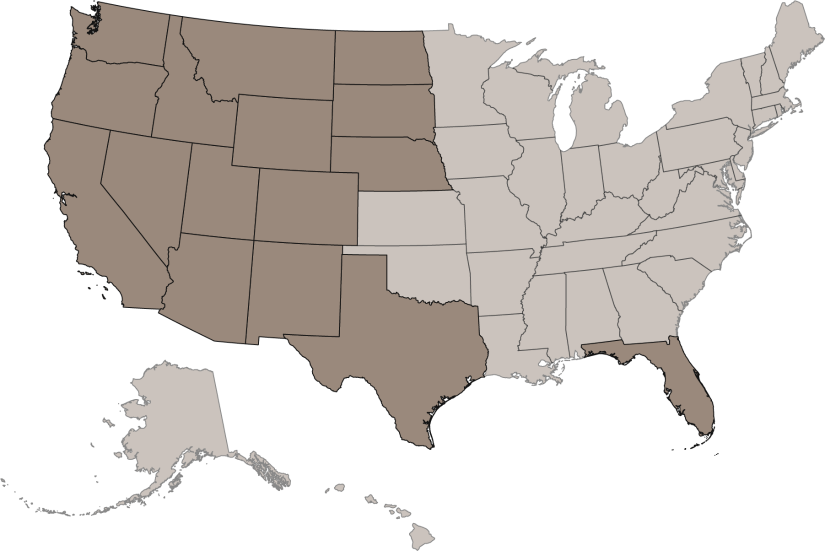
With more regulations and protections for wildlife in place, the number of mountain lions has grown in recent years. However, there isn’t much of an effort currently to revitalize the population in places like the East Coast of the U.S.
Interestingly, gray wolves have been at the front of a debate for nearly 30 years now. Just weeks ago, the state of Colorado took another big step by bringing more wolves into the state. Along with that comes controversy and headlines—something you don’t see as much for mountain lions.
Elbroch says he and the Panthera team are working on a paper on this very topic. He says the chances of seeing a sustained mountain lion population in a place like Virginia are pretty low. It would need a major effort by conservationists to change that.
“We modeled out how long it’s going to take to see breeding populations in the east, and it is a dismal picture,” says Elbroch. “I think the simple answer now would be if you want cats east of the Mississippi, you’ve got to bring them there.”
The only way for this to naturally happen would be for the west to become so full of mountain lions that they start searching for new territory farther east. However, the current population is nowhere near this saturation point.
Therefore, the same efforts made to bring wolves to Colorado would need to be made in New Hampshire (or other East Coast states) for mountain lions. Breeding pairs of cougars would need to be brought to these areas, and it would take decades.
In the meantime, researchers and organizations like Panthera are looking into more feasible ways to expand mountain lions’ range to closer match their historic range in the U.S.
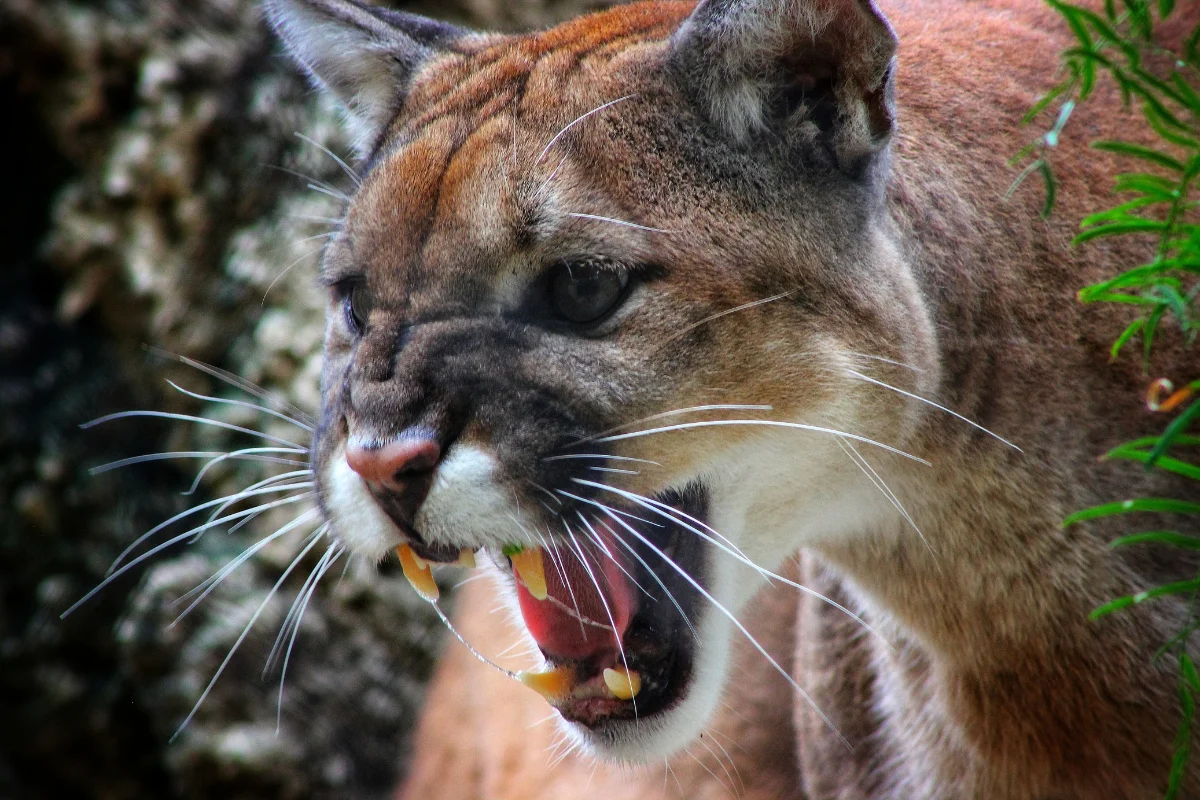
How to Identify a Mountain Lion
How do you know if you’re looking at a mountain lion, anyway?
Here’s what Elbroch says:
“I look at the length of the tail in relationship to the body. So, for a mountain lion, it’s one-third their length, which means that if you took the length of the tail, it should be exactly half the length of the body and the head. So, if you took the tail from the back end of the animal to the tip of its nose and cut it right in half, would the tail be longer or shorter? And if it is shorter, then you can pretty much rule out mountain lions just based on the tail.”
Other tell signs are how thick the tail is. Compared to most cats, mountain lions have thick tails.
Next up is head size. Generally, a mountain lion’s head is smaller when compared to the size of its body. This is especially true for female mountain lions. If the head is too large, it’s probably not a cougar.
“House cats, in particular, their heads look much larger proportionate to their body, and they tend to have shorter necks proportionate to their body,” says Elbroch.
It can be tough to identify an animal even when you know what you’re looking for. Usually, it takes multiple images or video. Like a blurry image of Bigfoot, most online photos and videos require more evidence than exists to prove a cat-like animal is not just a house cat.

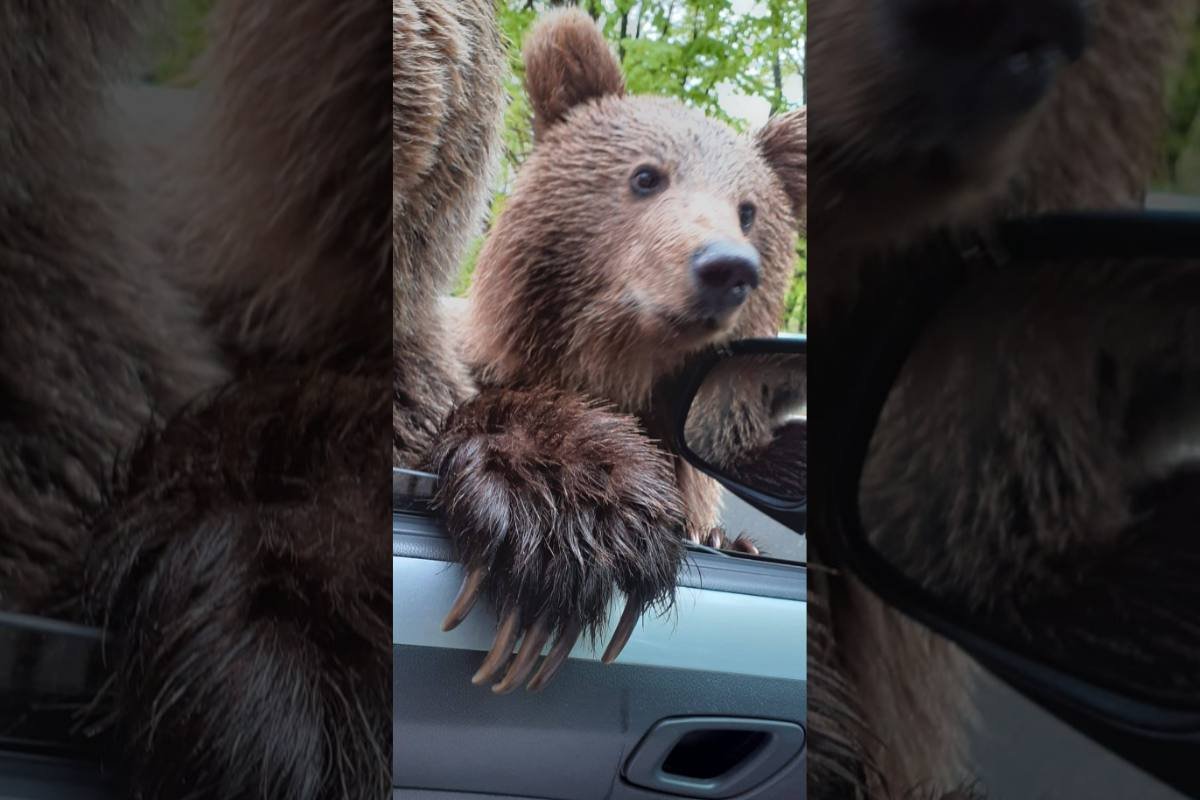
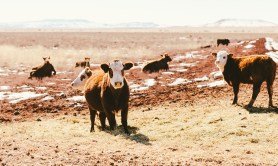

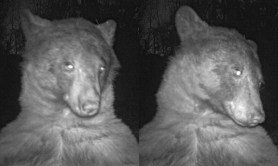





I have female mountain lion calls that are heard in the backyard in my woods and they answer to male mountain lion calls I play. I have seen a big cat at least the size of a Doberman if not bigger with its stomach a good 2 1/2 feet above the ground with a long tail that was all tan crossing the road in daytime in my oil truck. There was ring doorbell footage of a mountain lion 3 months ago acorss the pond from me posted on our town page. Mountain lions are here and just because the experts say it’s impossible they are still human and make mistakes. They are here the public knows the difference between bobcats and mountain lions the size difference is huge. They are here. Bobcats are small and spotted and look more like a big fluffy house cat and are more skittish. Mountain lion is a big cat with a big stride but still moves like a cat and is golden brown with a long tail unlike a stub for the bobcat. It’s not hard to look up pictures and know what you’re looking at.